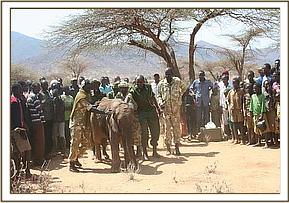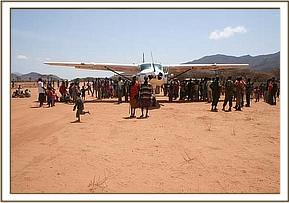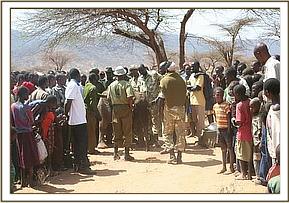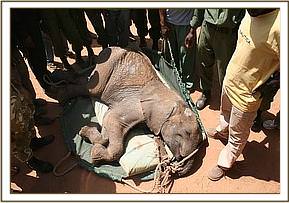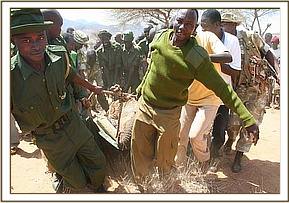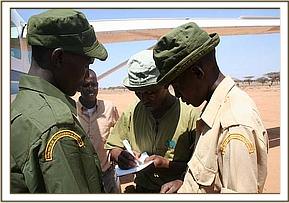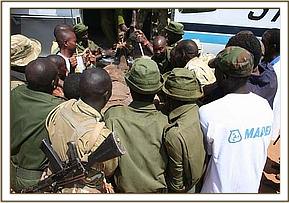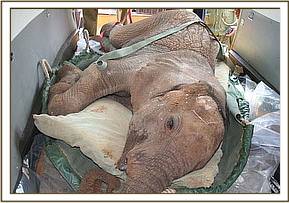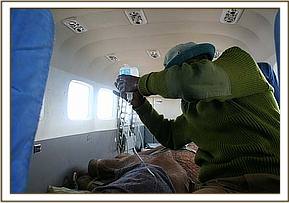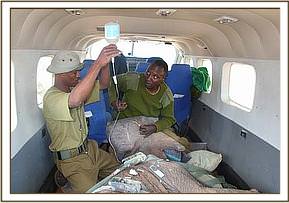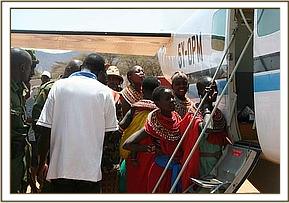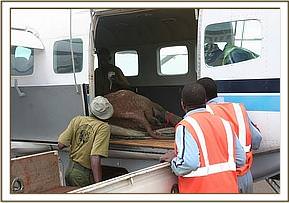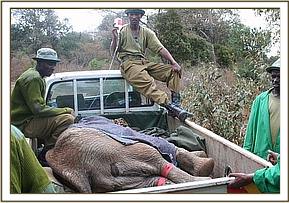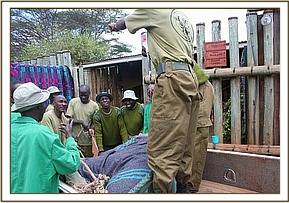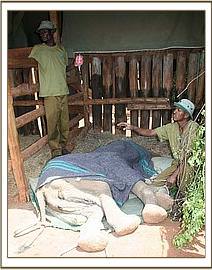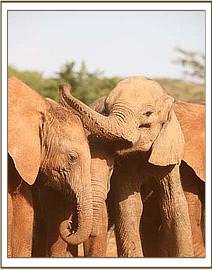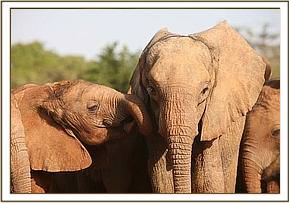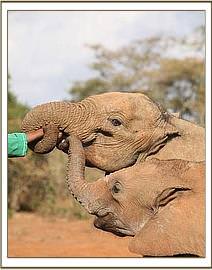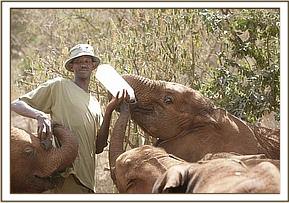







Now living wild, though he continues to visit us regularly
Current age
18 years old
Gender
Male
Rescued date
10 September 2009
Rescue location
Samburu, Meibai Community Conservancy
Date of birth (estimate)
10 September 2007
Reason orphaned
Unknown
Age at rescue
2 years old (approx)
Current location
Living Wild
The elephant calf had apparently been seen alone by tribesmen in the area for several days beforehand, who had tried to monitor the baby on a daily basis, hoping that it would eventually find, and join, its mother. However, being still milk dependent, it was becoming ever weaker, and by the time it was captured it was obvious that its mother had either died or been poached somewhere in the vast and remote Northern Frontier, an area that has been hard hit by both drought and the Far Eastern demand for ivory.
The calf was tall for his age, with the tusks just visible whenever the trunk was lifted, indicating that he was about 2 years old.
Most Kenyans, even those in remote areas, today look upon a Mobile Phone as a necessity so even the people of that remote region were able to alert us in the Nursery about this orphan. Robert Carr-Hartley, who is well known amongst the Samburu people of that area, took the call on his mobile, since all the landlines of the Trust were, as usual, out of order. He told them exactly what to do should they succeed in capturing the calf i.e. bind its legs together with soft cloth, but not too tight so as to restrict the flow of blood, keep the baby warm by covering it with a blanket, lay it on a mattress turning it over several times during the course of the night, and remain with it so that it is not alone, treating it gently and with genuine and caring kindness so that it will understand it is amongst friends. Finally, under no circumstances offer it cows’ milk, because this will kill it. Instead only give it water.
At first light they went to report the presence of the elephant first to the Meibai Conservancy Scouts and then to KWS and Lewa Downs Conservancy who organized that a Northern Rangelands Trust vehicle come to collect the calf and rush it to Wamba airstrip, to await a plane dispatched by The Sheldrick Wildlife Trust from Nairobi to fly the orphan to our Elephant Nursery.
It so happens that one of our Elephant Keepers named Leleruk comes from that particular area, and is well known to the locals there, who are extremely supportive of the Trust and its work with the orphans. To us Leleruk is known as “Zoom Zoom” because he is such a cheerful and exuberant character. His experience with the orphaned elephants and everything that he has learnt about the nature of elephants as a result, has been relayed many times to his Samburu peers whenever he returns home, so they understand just how important to them and to Kenya generally elephants are, proving again how the orphaned elephants help get this message across the elephant/human divide.
The Rescue Plane left Nairobi at first light the following morning (6th Sept), and landed at Wamba airstrip a couple of hours later with Leleruk and Keeper Abdul aboard, armed with the usual life saving intravenous drip support as well as a milk feed. The calf was already at the airstrip, surrounded by hundreds of concerned tribes-people, who crowded around it, all anxious to see their their special elephant lifted to safety, since even the sight of an aircraft on that remote airstrip is a novelty. By then the calf was almost spent, and calm beyond caring, so as soon as it was loaded onto the plane, the intravenous drip was inserted into an ear vein as it lay with its legs bound on the rescue tarpaulin. As the plane soared into the sky, Leleruk and Abdul could see a sea of waving arms below, like the tentacles of a sea anemone as the crowd waved a fond farewell. Keeper Abdul was incredulous how cooperative and supportive the people of that area were, but Leleruk was not surprised!
The baby arrived in the Nursery still comatose and with the saline drip inserted into an ear vein. We doubted that he would ever get up again, for many others like him from the North having died soon after arrival. However, much to everyone’s surprise, he was lifted to his feet during the night once he came round, and immediately took milk and began feasting on the Grewia bicolor branches which had been sent to the Nursery from far off Ithumba – something that all elephants love and which contain all the minerals and trace elements an elephant needs to thrive. He was amazingly friendly and trusting of the two Keepers that attended him during the night and by morning, having regained some strength, he was only gently rough towards them, but soon calmed down as they offered him the bark stripped from the Grewia branches. Having spent just one day in the Taming Stockade, he was allowed out the next morning, joining the older Nursery orphans led by Kenia and Dida.
His rescuers suggested that he be named Meibai which in the Samburu dialect has a special meaning that is difficult to adequately translate into English. The best we can do is to say that it means “something extremely precious that is priceless” – a fitting name indeed for a very lucky little elephant calf who owes his life to tribesmen in a remote area of Kenya, who themselves are suffering enormous hardship during this extremely severe drought year of 2009. All credit to the 4 Samburu Warriors that captured and rescued him and thanks to the Northern Rangelands Trust for their vehicle and driver, and to Lewa Downs and the KWS officers involved, for their help, namely Driver Peter Kupis of the Northern Rangelands Trust, and Corporal Roba Kumbi and Sergeant Charles Mukabi of KWS.
The elephant calf had apparently been seen alone by tribesmen in the area for several days beforehand, who had tried to monitor the baby on a daily basis, hoping that it would eventually find, and join, its mother. However, being still milk dependent, it was becoming ever weaker, and by the time it was captured it was obvious that its mother had either died or been poached somewhere in the vast and remote Northern Frontier, an area that has been hard hit by both drought and the Far Eastern demand for ivory.

View diary updates from across all our orphan units as written by the Keepers

As the dry season tightened its grip over Tsavo and rain filled waterholes dried out, yet again the wild elephants and our own ex-orphans began drinking on a daily basis at both the mudbath water trough and the one at the Ithumba Stockades
By adopting, you play a vital role in the life of an orphaned elephant, rhino, or giraffe — helping us provide the round-the-clock, loving attention each one needs and deserves over many years, so they can ultimately reclaim their place in the wild.
Your adoption supports the 100+ orphans in our care at any given time, covering the cost of milk and food supplies, Keepers' salaries, veterinary treatment, and other essentials.

Celebrate your adoption with a personalised certificate, ready for you or your lucky gift recipient to print and display!

Each month, we send a detailed update about our Orphans’ Project direct to your email inbox, featuring photos, stories, and special highlights.

From the latest Keepers’ Diaries to a downloadable image gallery and more, adopters have exclusive access to our content library.
